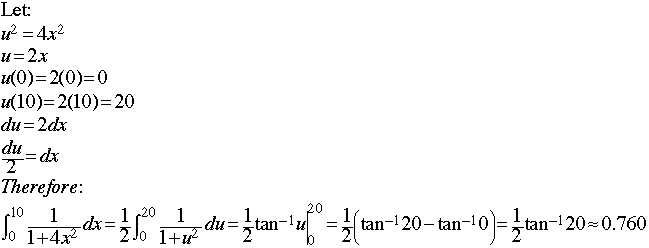
Since y = tan -1x is the inverse of the function y = tan x, the function y = tan -1x if and only if tan y = x. But, since y = tan x is not one-to-one, its domain must be restricted in order that y = tan -1x is a function. To get the graph of y = tan -1x, start with a graph of y = tan x. (The window at right is [-2 |
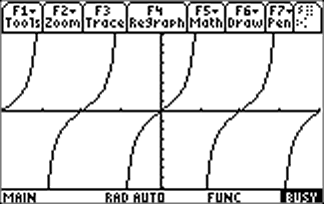 |
| Restrict the domain of the function to a one-to-one region - typically |
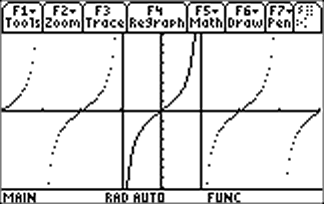 |
Reflect this graph across the line y = x to get the graph of y = tan -1x (y = arctan x), the thickest black curve at right. Notice that y = tan -1x has domain |
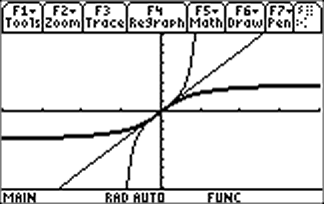 |
| So, when you ask your calculator to graph y = tan -1x, you get the graph shown at right. (The viewing window is [-2 |
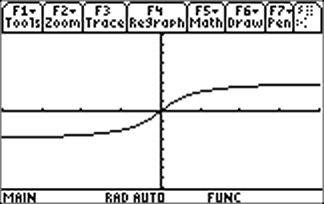 |
The derivative of y = tan -1 x is: (Click here for a derivation.)
The graphs of y = tan -1 x and its derivative is shown below. The domain of y' is ![]() . Since y = tan -1 x is always increasing, y' > 0 for all x in its domain.
. Since y = tan -1 x is always increasing, y' > 0 for all x in its domain.

Here is a typical problem:
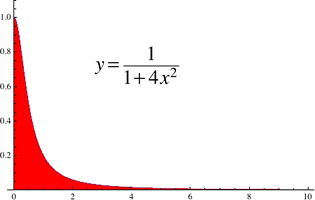 What is the area under the graph of
What is the area under the graph of ![]() on [0,10]?
on [0,10]?
The graph of this region is shown at right. The area of this region is:
![]()
Now, we know that:
![]()
Comparing what we know with what we need to know suggests that we let u2 = 4x2:
